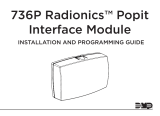
The power cable can be routed from above the right of the top cover; it can be routed from the ceiling.
Powerline disturbances
Reliable operation of your printer depends on the availability of relatively noise-free AC power.
●
In order to ensure optimum performance and reliability, your printer should be protected from
variations in line voltage, which are common to production printing environments. Lighting, line
faults, or the power switching commonly found in machinery in factory environments can generate
line transients that far exceed the peak value of the applied voltage. If not reduced, these micro-
second pulses can disrupt system operation.
●
If the power line supplying the installation site is a public low voltage line shared with other users,
the power line impedance at 50 Hz must be less than 52 mΩ for the LX600, or less than 34 mΩ
for the LX800, to comply with European regulations. If other users on the same power line report
any flickering of incandescent light bulbs, contact your electricity supplier to verify that the power
network has an impedance lower than the one specified above.
●
It is recommended to include overvoltage (OVP) and transient protection on the power supply to
the printer.
●
All electrical noise generating equipment, like fans, fluorescent lighting, and air-conditioning
systems, should be kept separate from the power source used for your printer.
●
The heating and curing lamps are powered by the three-phase AC lines. For optimal printer
operation, the three-phase system must have a maximum variation equal to or lower than 3%
voltage unbalance, and 5% voltage sag. If the maximum variation is not within this range, print
quality and printer operation may be affected. Contact your electricity supplier to remedy any
voltage unbalance or sag.
To avoid certain specific system errors in some cases, such as 15.8:10 or 16.8:10, you are
recommended to have no more than 10 V variation in the three-phase line (line to line).
Grounding
The printer must be connected to a good quality, dedicated ground line in order to avoid electrical risk.
Please note your obligation to comply with the National Electrotechnical Code (NEC) in the county of
installation.
The following grounding tasks must be fulfilled to meet the site preparation requirements:
●
Grounding wires should be insulated and at least equal in size to the phase conductors.
●
Ground impedance must be less than 0.5 Ω.
●
The installation of a single point and dedicated ground.
●
Power stabilizer equipment that is supplied by three uninterrupted phase wires and one
uninterrupted copper ground wire from the main building service panel. These should run in the
same conduit and should be at least equal in size to the phase wires.
Air supply requirements (pneumatic spindle)
Air pressure supply
The pneumatic spindle requires an air compressor or pressurized air line that must be provided by the
customer.
ENWW
Air supply requirements (pneumatic spindle)
9
Site preparation






















